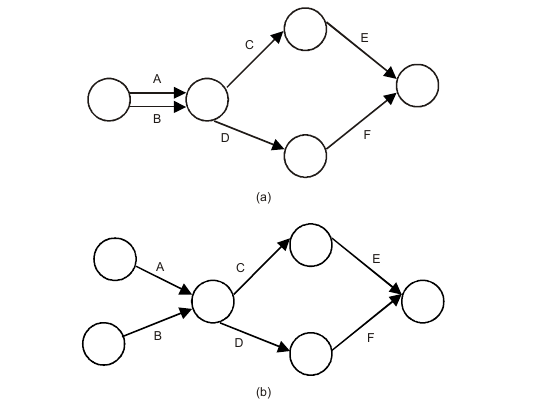| Activity | Description | Predecessor |
| A | Purchase of Land | – |
| B | Preparation of building plan | – |
| C | Level or clean the land | A |
| D | Register and get approval | A, B |
| E | Construct the building | C |
| F | Paint the building | D |
Solution:
The activities C and D have a common predecessor A. The network representation shown in Figure 1 (a), (b) violates the rule that no two activities can begin and end at the same events. It appears as if activity B is a predecessor of activity C, which is not the case. To construct the network in a logical order, it is necessary to introduce a dummy activity as shown in Figure 2.


Total Views: 19
